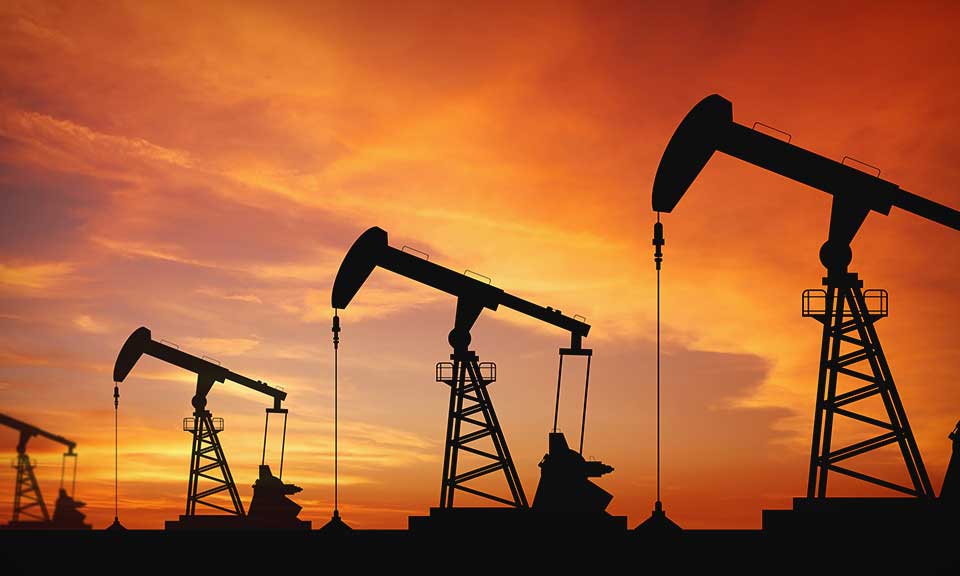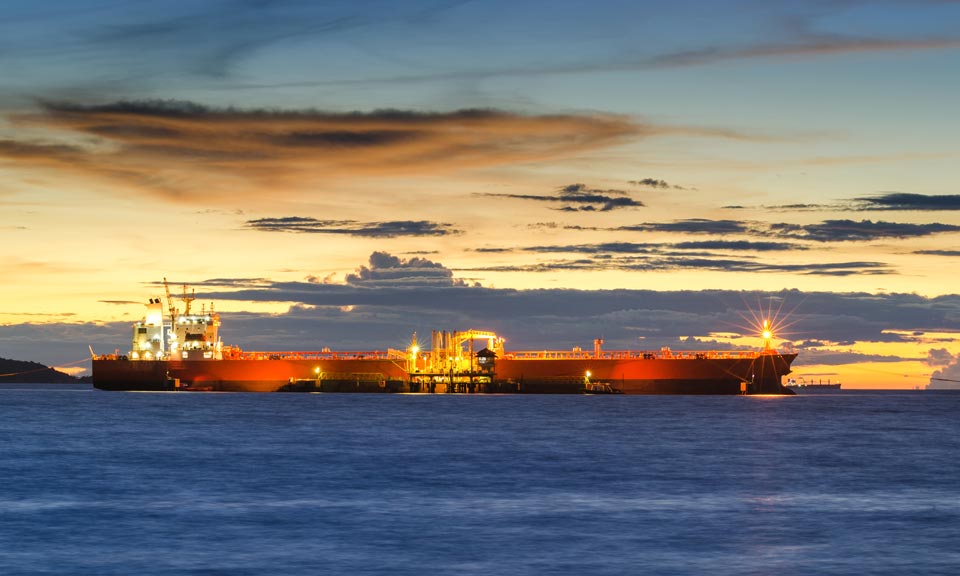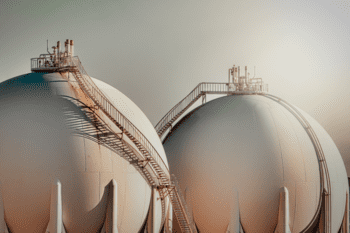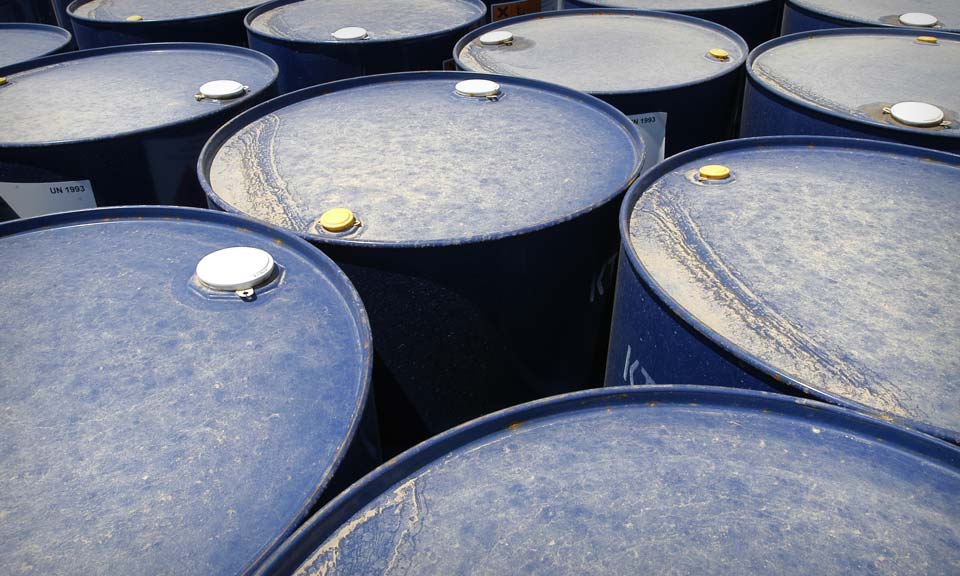European gasoil market bracing for fallout from Russia sanctions

The European physical gasoil market, already showing signs of tightness, could strengthen further on reduced supply from Russia due to the EU's February 5, 2023 sanctions, according to analysts and traders, but economic weakness will likely provide shock absorbers.
Russia has long been Europe's key gasoil supplier and many analysts believe EU sanctions banning Russian product imports will cause volumes to Europe to collapse.
The CIF Mediterranean 0.1%S Gasoil cargo cash differential versus the front month ICE low sulfur gasoil future strengthened $2.75/mt on the week to Nov.24, to a discount of $5.75/mt below the ICE LSGO. On an outright basis, the CIF Med 0.1% gasoil price is $913.75/mt – its highest level in a week as seasonal winter demand rises.
In Northwest Europe, although CIF Northwest Europe 0.1%S gasoil cash differentials strengthened $2/mt on the week to Nov.24 to a discount of $28.25/mt below the ICE LSGO as traders report that the market is strengthening.
"[NWE 0.1%S] swaps have been heading up for a while," one trader said. "Mediterranean [gasoil] prints [the physical outright price published by Platts] have been holding despite the [strong] backwardation [in ICE LSGO futures]."
Traders highlighted that differentials had a lot of potential to increase in the following months as a result of EU-Russian sanctions and fewer flows, in general, coming to the region.
"Next year differentials are rating quite strongly," a second trader said, adding that with no flows from Russia, the principal users of gasoil in Europe will have to look for different sources of supply. Russian product made up around 14% of European gasoil demand in 2021, according to the latest outlook from S&P Global Commodity Insights analysis.
"The pressure to cover lost Russian cargoes at a time of existing global tightness are bullish for prices in coming months and in early 2023," said Rebeka Foley, an analyst at S&P Global.
However, she adds that global economic weakness will temper demand, "providing a reprieve to supply concerns."
S&P Global forecasts global gasoil demand to rise 380,000 b/d on the year in 2023, compared to 520,000 /d in 2022, with Europe set to contract in this current quarter and the first half of 2023.
The main European demand hubs for 0.1%S gasoil in the Mediterranean have traditionally been Greece, Spain, and Italy. In Europe as a whole, France is the largest demand center for 0.1%S gasoil for use as a heating oil.
Market participants suggested that European gasoil demand could be fulfilled by refineries, primarily in the UK and Rotterdam, through increases in production. A third trader also suggested that supply could come from reducing exports from the Amsterdam-Rotterdam-Antwerp hub to West Africa. Due to the lower restrictions on Russian product exercised by African nations, flows could potentially go directly from Russian Baltic ports to West Africa, a fourth trader said.
"Europe exports a lot of the heavier grades to Africa," the third trader said, "so the lack of Russian products will eat into that source."
European refinery capacity has also recently increased following the end of outages due to French refinery strikes at the end of October which at its height took out four of the country's six refineries. Nevertheless, strikes that began in BP's Rotterdam refinery Nov.22 and at Pembroke Docks serving the Valero Energy refinery in the UK on Nov.16 may see refining capacity reduced again.
On top of this, European refineries continue to prioritize the production of diesel over gasoil due to favorable cracks and the large sulfur spreads between the 10ppm ultra-low diesel cargo prices and the 0.1%S gasoil cargo prices.
Platts, a part of S&P Global Commodity Insights, assessed that 10ppm ULSD FOB ARA vs Brent crack at $39.95/bl compared to the 0.1%S Gasoil FOB ARA vs Brent crack at $35.69/bl. According to the latest outlook from S&P Global CI Analystics, ARA distillate cracks are expected to average well about the 5-year range, at $43/b in the first half of 2023 and $40/b in H2 2023.
The incentive for desulfurization remains strong on the back of a $59.75/mt spread between 10ppm CIF Med cargoes and 0.1%S CIF Med cargoes prices, assessed Nov.24. The NWE sulfur spread was assessed at $85/mt on Nov.24.
"For refineries, once they have the feedstock, desulfurization costs [very little]," the second trader said. "To bring gasoil to the market or convince refineries to make it, it has to be well-bid." They continued that once demand hit from falling temperatures, cash differentials would strengthen significantly.
Analysts have added that supply into the European gasoil complex could be supplemented by flows coming from the US and the Persian Gulf. That said, US flows would likely be diesel.
New refineries built in Saudi Arabia could allow Middle Eastern gasoil flows to help replace Russian volumes, market participants have said.
said.

News
Russia, one of the world’s largest oil suppliers, has increasingly turned to non-Western firms to transport its crude to overseas buyers during its ongoing war with Ukraine . With a dual goal of undermining Russia’s war chest without creating significant disruptions to global supplies amid inflation pressure, G7 countries and their allies have banned tanker operators, insurers and other services firms from facilitating seaborne Russian crude exports unless the barrels are sold for no more than $60/b. The price cap regime, which came into force Dec. 5, 2022, does not directly cover tankers flagged, owned and operated by companies outside the G7, the EU, Australia, Switzerland and Norway, and not insured by Western protection and indemnity clubs. While such ships tend to be older and less maintained, their share in Russia’s crude exports market has been rising in recent months amid strengthening prices of Urals -- the OPEC+ member’s flagship crude grade -- and tightening sanctions enforcement by the West. Non-price-capped tankers have a larger market share in shipping Russia’s Pacific crude exports, according to analysis of S&P Global Commodities at Sea and Maritime Intelligence Risk Suite data. Crudes such as Sokol, Sakhalin Blend, and Eastern Siberia–Pacific Ocean grades are more often involved in these trades than Russian barrels from Baltic or Black Sea ports like Urals. Tanker operators in Greece, Europe’s top shipowning nation, managed to keep their traditionally strong market position in Russia in the first few months since the price cap took effect before giving ways to their peers in the UAE, Russia, China and Hong Kong. (Latest update: April 5, 2024)

News
Recording changes to Russian oil exports and EU oil imports since the war in Ukraine Russia’s war in Ukraine has triggered a major upheaval in the global oil markets, forcing Moscow to find alternative buyers and Europe to source new supplies as Western sanctions seek to clamp down on Moscow’s vital oil revenues. With an EU embargo and the G7 price cap on Moscow's oil now fully in place, Russian seaborne crude exports have remained largely resilient as displaced volumes of its discounted oil flow East. Russian oil product exports have also mostly held up with new buyers in Africa absorbing Russian diesel and other fuels now banned from Europe. (Latest update: April 3, 2024)

News
Initiative driven by demand for batteries from vehicles, energy storage IOC aims to be carbon-free by 2046 Tie-up comes as India supports NEV buildup Japan's Panasonic Energy and state-run Indian Oil Corp aim to finalize details for a joint-venture to manufacture cylindrical lithium-ion batteries in India as early as June to September, the Japanese battery maker said April 1. Both companies will engage in "a feasibility study regarding the utilization of battery technology to facilitate the transition to clean energy in India," Panasonic said, and have signed a binding term sheet with details to emerge "by the summer of this year." The initiative by the companies "is driven by the anticipated expansion of demand for batteries for two- and three-wheel vehicles and energy storage systems in the Indian market", it said. The collaboration comes as India takes steps to build up infrastructure for manufacturing and supporting new energy vehicles, especially in its interim budget for 2024-25. Following the budget announcement, Chinese automaker SAIC Motor and India's JSW Group plan to install a production capacity of 200,000 vehicles/year in India, focusing on NEVs, with ramping up to start from the end of 2024. In China, NEV is a term used to designate automobiles that are fully or predominantly powered by electricity and include battery electric vehicles as well as plug-in hybrid EVs and fuel cell EVs. IOC's tie-up with Panasonic will support the energy company's goals to be a zero-carbon emitter by 2046. India's lithium-ion battery manufacturing industry is expected to grow at a compound annual growth rate of 50% from 20 GWh in 2022 to 220 GWh by 2030, data from the India Brand Equity Foundation showed. Platts assessed prices for battery grade lithium carbonate at $14,350/mt CIF North Asia March 28, flat from the previous session, S&P Global Commodity Insights data showed, while lithium hydroxide stood at $14,000/mt CIF North Asia, also unchanged from the session before. Platts Connect: News & Insights (spglobal.com)

News
(Latest update March 28, 2024) OPEC+ ministers face the challenge of managing a slumping oil market as they discuss crude production for 2024. The following infographic highlights some key issues to watch out for during the upcoming talks. Related feature : OPEC+ committee meets as output cut policy finally boosts prices (subscriber content) Click for the full-size infographic